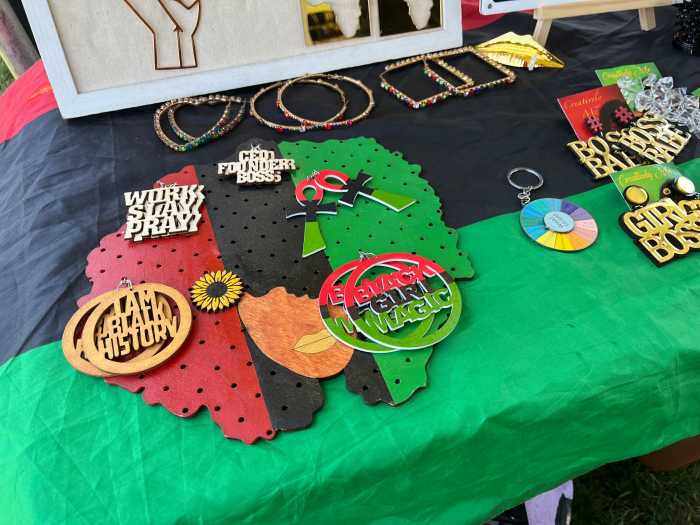As New Year’s Day approaches, Haitians around the world prepare for another time-honored custom, the making of soup joumou, pronounced “joo-moo.” Jan. 1 is not celebrated properly for Haitians unless they partake in their traditional pumpkin soup.
The ingredients have long been assembled by the time New Year’s Eve rolls around. That’s when Maryse Jean-Baptiste of Bushwick begins making her soup stock with a beef bone.
The soul of the soup is the squash, usually a West Indian pumpkin. This mother of two young adults uses either calabaza squash–looks like a small pumpkin, often sold in cut sections, or kaboucha–a green mottled, squat pumpkin. Both have bright orange flesh that flavors, colors, and thickens the soup.
“We have a lot of Caribbeans in this neighborhood and you can find both types in the stores,” Jean-Baptiste says.
“Early on New Year’s day, I cook the squash, and then blend it,” she details, eventually adding it to the stock with the vegetables: cabbage, carrots, onions, leeks, potatoes, celery and “a few handfuls of macaroni, spaghetti, and some rice” and the meat that has been browned.
It turns out that everyone’s recipe for soup joumou is a combination of historical, family and personal tradition. Some people don’t use rice or pasta. “Sometimes, I add chicken,” says Jean-Baptiste. (Vegetarian versions are also a popular adaptation).
Jean-Baptiste is originally from the small town of Pilate in Northern Haiti. After noon on Jan. 1, close family members assemble to celebrate and eat her time-perfected soup.
Canarsie-resident Lily Cerat marinates her meat before she leaves for her New Year’s Eve’s festivities. “I make up a packet of herbs when I cook the stock,” she divulges on how cilantro is an important addition in her flavoring.
“When I get home, I begin cooking in earnest.” She puts a big pot on the stove for the undetermined number of friends and family who will drop by during the day. “I like to add ziti, but cook it on the side, just adding some at the end so it doesn’t thicken the soup too much. In a pinch, I’ll add some frozen squash,” she admits. (For others, butternut squash is sometimes used.)
“My first bowl is an offering to the ancestors,” she says. “When we eat the soup, we sit around and reminisce what it means.”
Jan. 1 is also the Haitian day of independence. On that date in 1804, Haiti was liberated from France.
It is said that white masters forbid slaves to eat the soup that those same slaves, in fact, had cooked. Eating this soup celebrates their successful slave revolution and the birth of an independent nation.
For Cerat, anything left over gets frozen for future Sunday mornings.
Soup joumou is on the menu, particularly on Sunday mornings, in many local Haitian restaurants and take-out joints. But, let’s face it, the restaurant soup is never quite as good as your own or your friends’, made with love, perfected over time, and on this occasion, part of an important yearly ritual.

























